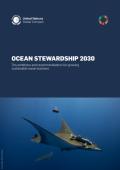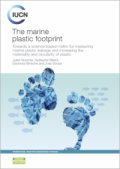
The purpose of the Resilient Water Infrastructure Design Brief is to guide users on how resilience can be built into the engineering design of their project. With a focus on the three natural hazards most likely to affect water and sanitation infrastructure (droughts, floods, and high winds from storms), the document provides a six-step process to help users address weather and climate related challenges that are most likely to affect an infrastructure component at some point in its operational lifetime.

This book offers policy options for countries to improve the access, quality, and affordability of services today, to ensure that they will be sustainable in the future, and to harness emerging technological advances for the benefit of all.

This report offers a timely and practical roadmap featuring five priority blue stimulus opportunities that are ripe for immediate investment of stimulus funding.

This report offers a roadmap for how ocean-related industries and policymakers can jointly secure a healthy and productive ocean by 2030.

The approach discussed in this report focuses on inventorying plastic flows into the marine environment only. It does not look at plastic releases into the terrestrial environment, or any ecosystem or human health impacts that may result from marine plastic leakage.
